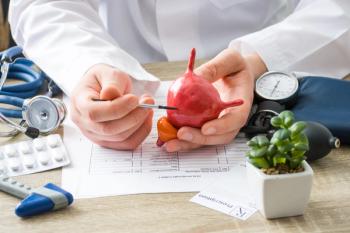
- August 2017 Pain Awareness
- Volume 83
- Issue 8
More than 100 Million Americans Have Diabetes, Prediabetes
As of 2015, 30.3 million Americans—9.4% of the US population—have diabetes, and another 84.1 million Americans have prediabetes, according to a recently released report from the CDC.
As of 2015, 30.3 million Americans—9.4% of the US population—have
Although the findings indicate that the rate of new diabetes diagnoses is holding steady, thanks in large part to diabetes management and prevention programs, diabetes remained the seventh-leading cause of death in the United States in 2015. The report also includes county-level data for the first time and shows that some areas of the country bear a heavier diabetes burden than others.
Key findings from the National Diabetes Statistics Report include the following:
- In 2015, an estimated 1.5 million new cases of diabetes were reported among individuals 18 years and older.
- Nearly one-fourth of adults living with diabetes did not know they had the disease. Only 11.6% of adults with prediabetes knew they had it.
- Rates of diagnosed diabetes increase with age.
- Rates of diagnosed diabetes were higher among American Indians/Alaska Natives (15.1%), non-Hispanic blacks (12.7%), and Hispanics (12.1%), compared with Asians (8%) and non-Hispanic whites (7.4%).
- Diabetes prevalence varied significantly by education. Among US adults with less than a high school education, 12.6% had diabetes. Among those with a high school education, 9.5% had diabetes. Among those with more than a high school education, 7.2% had diabetes.
- More men (36.6%) had prediabetes than women (29.3%).
To reduce the impact of prediabetes and type 2 diabetes (T2D), officials with the CDC established the National Diabetes Prevention Program (National DPP), which provides the framework for T2D prevention efforts in the United States. Based on the landmark Diabetes Prevention Program research findings funded by the National Institutes of Health (NIH), the National DPP includes an evidence-based, year-long, behavior change program to improve eating habits and increase physical activity to lose a modest amount of weight and significantly reduce the risk of T2D.
Articles in this issue
over 8 years ago
Generic Product News (August 2017)over 8 years ago
Intrarosaover 8 years ago
Rx Product News (August 2017)over 8 years ago
ISMP Medication Error Safety Briefsover 8 years ago
OTC Product News (August 2017)over 8 years ago
Self-Care for Painover 8 years ago
Pharmacists Can Play Important Role in Depression Screeningover 8 years ago
Balancing Prescription Safety and Costover 8 years ago
Market Competition Levels May Influence Generic-Drug CostsNewsletter
Stay informed on drug updates, treatment guidelines, and pharmacy practice trends—subscribe to Pharmacy Times for weekly clinical insights.







































































































































































































